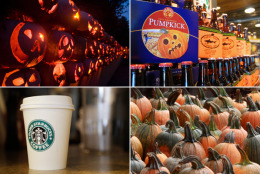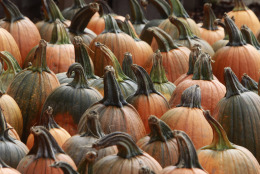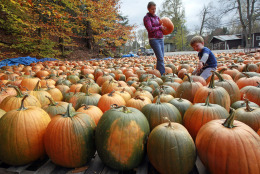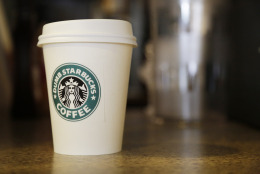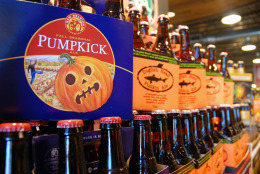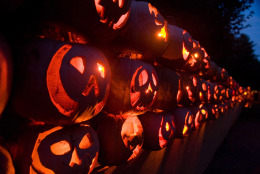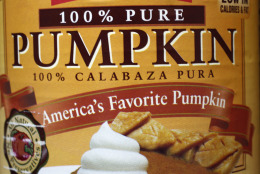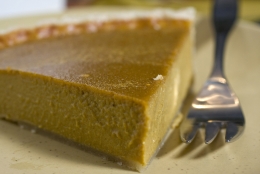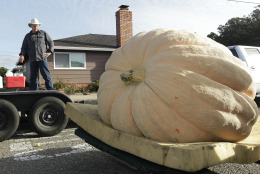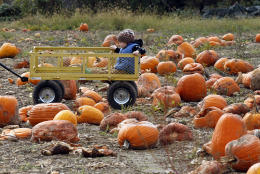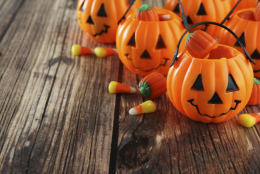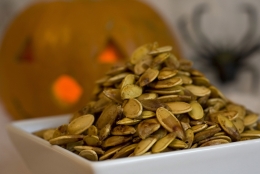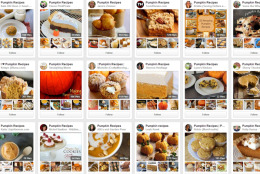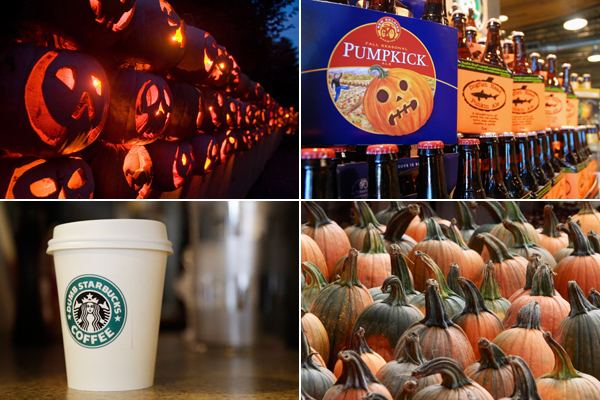
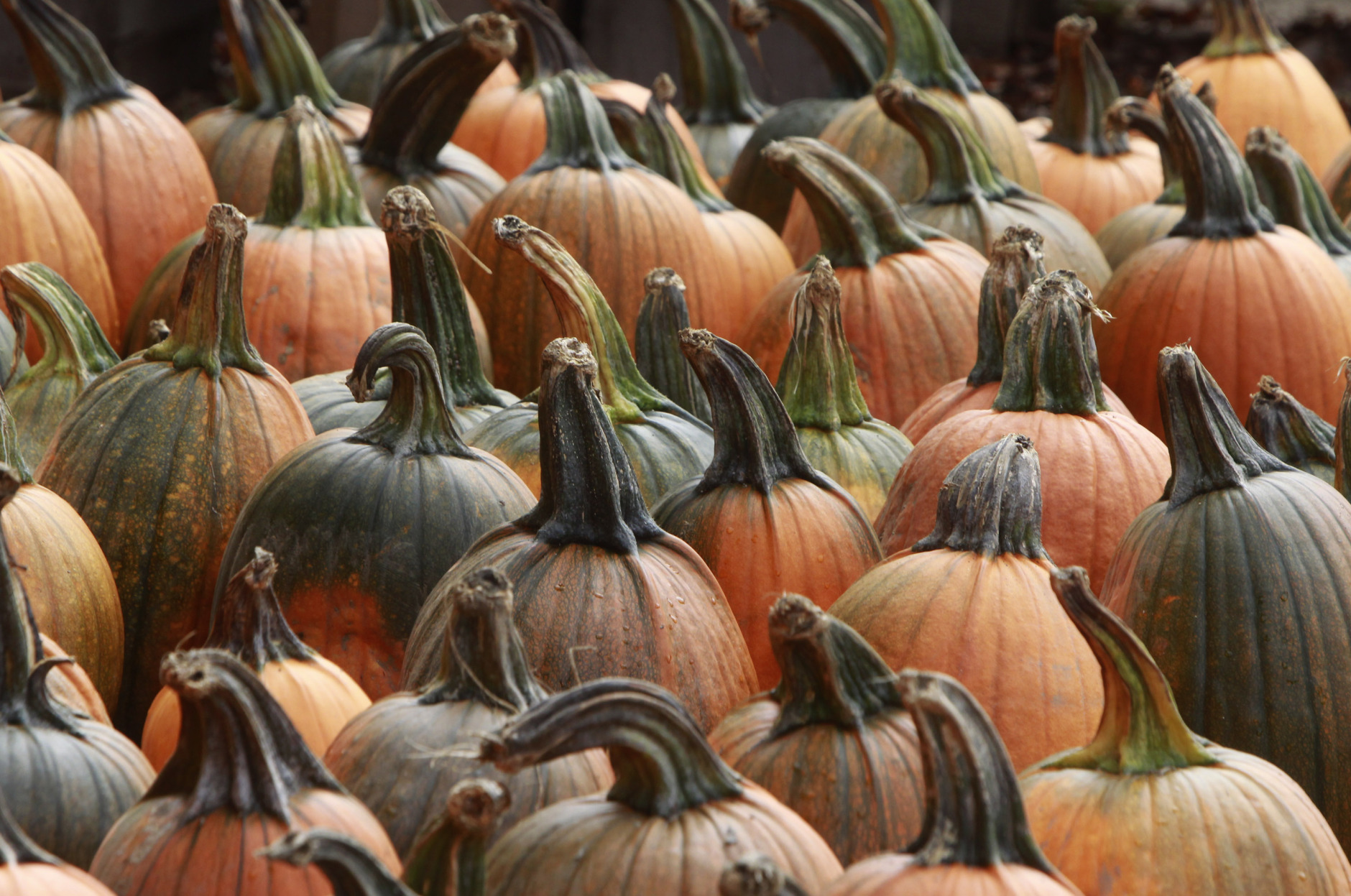
How did the pumpkin get its name? Well, it's kind of a long story … it all started with the Greek word "pepon," which means "large melon," The University of Illinois reports. The pronunciation was changed by the French into "pompon," and then to "pumpion" by the English, as seen in Shakespeare's "Merry Wives of Windsor." American colonists changed "pumpion" to "pumpkin."
The pumpkin is believed to have originated in the Americas. Native Americans ate pumpkin roasted, baked and dried; they ground it into flour and used the fruit for medicinal purposes. (AP Photo/Toby Talbot)
AP Photo/Toby Talbot
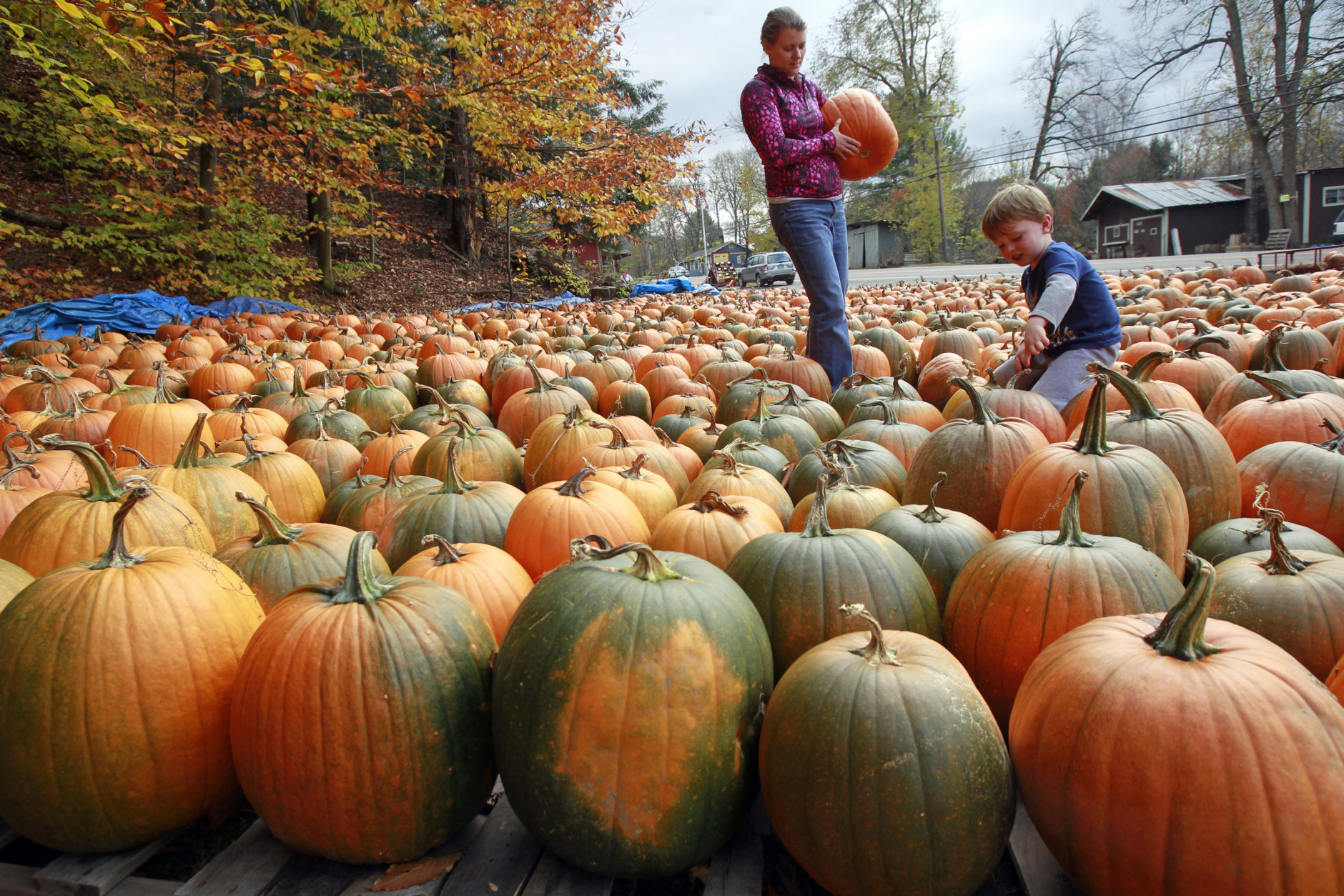
Pumpkins are packed with the antioxidant beta-carotene, which is evident in the fruit's bright orange color. According to the National Institutes of Health, beta-carotene may play a role in preventing cancer. Pumpkins are also rich in vitamin A, vitamin C, potassium and fiber, and only pack about 49 calories per one-cup serving.
Need some recipe inspiration? Try this red lentil pumpkin soup recipe from Cooking Light, or this dish of kale, quinoa and roasted pumpkin pilaf. (AP Photo/Toby Talbot)
AP Photo/Toby Talbot
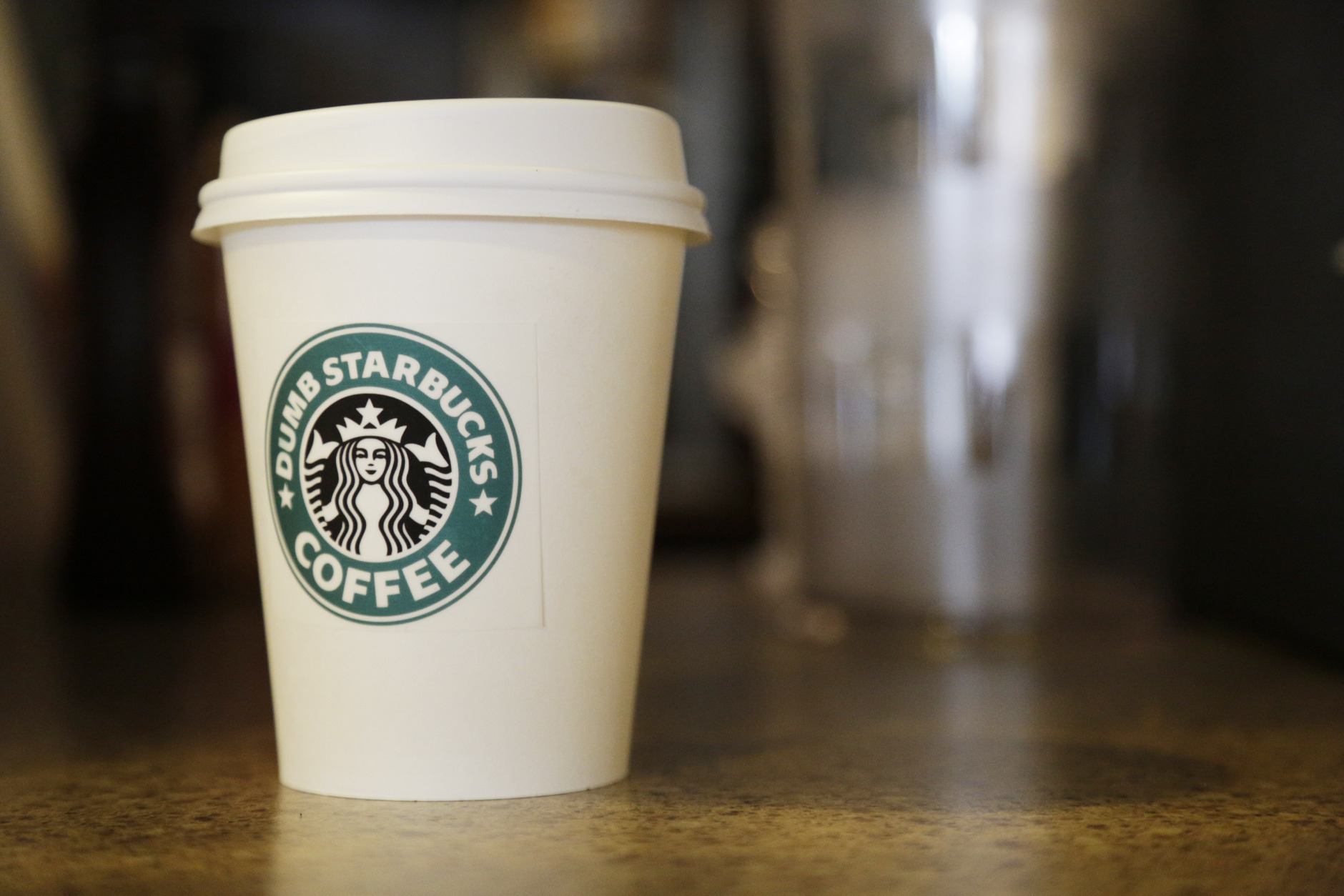
It doesn't seem to matter that pumpkin is not an ingredient in Starbucks' Pumpkin Spice Latte -- also known as the PSL; people go nuts over the seasonal steamed drink.
Starbucks launched the PSL in 2003, and has since sold more than 200 million lattes, the company says. The PSL also has its own Twitter account, with more than 89,000 followers.
And while most of Starbucks' fall drinks (the Teavana® Oprah Chai Tea Latte and the Salted Caramel Mocha) are available Sept. 2, the PSL was made available to fans "in the know" on Aug. 27. (Getty Images News/Dan R. Krauss)
Getty Images News/Dan R. Krauss
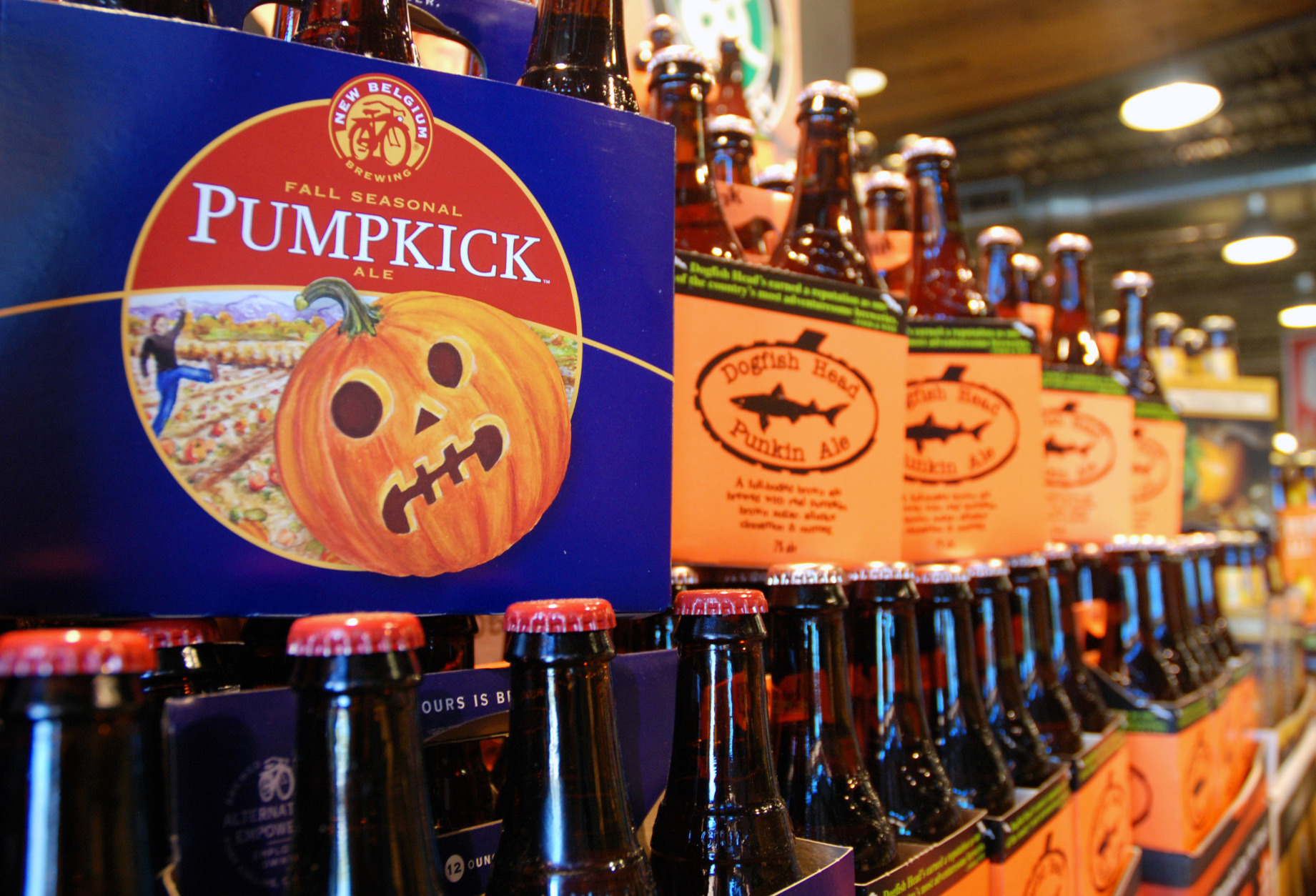
There are more than 400 pumpkin beers on the market today, but pumpkin beer is not a modern concept. Lisa Grimm, blogger and beer historian, wrote about the history of pumpkin beer for Serious Eats. Here are some interesting takeaways:
- Pumpkin beer was named in Samuel Stearns' "The American herbal; or, Materia medica" in 1801, along with porter and ale, as a healthy beverage.
- In the early Colonial period, the meat of pumpkins often took the place of malt in the brewing process.
- Pumpkin beer remained a staple throughout the 18th century, but its popularity began to wane in the 19th.
- Buffalo Bill's Brewery, in Hayward, California, gets the credit for reviving pumpkin beer in the 1980s.
AP Photo/Michael Felberbaum
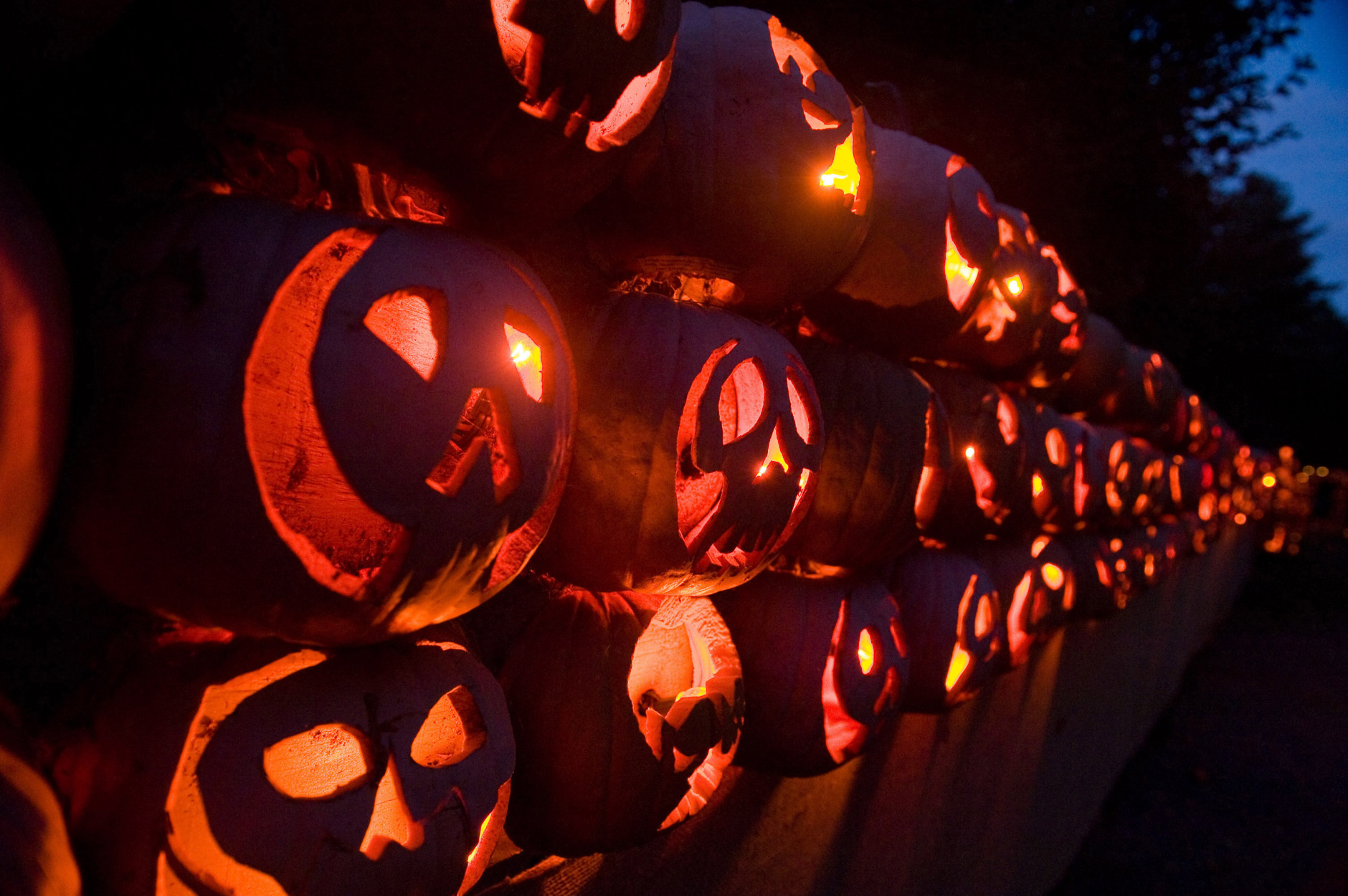
Halloween originates from the ancient Celtic holiday of Samhain, which the Celts celebrated to mark the end of the harvest season, The History Channel reports.
The practice of carving pumpkins for Halloween came to the U.S. from the Irish with the myth of Stingy Jack. The Irish and the Scottish would use turnips and potatoes as their carving canvases to make "Jack's lantern." Once the tradition spread to the U.S., Americans and immigrants started carving the pumpkin. (AP Photo/Charles Sykes)
AP Photo/Charles Sykes
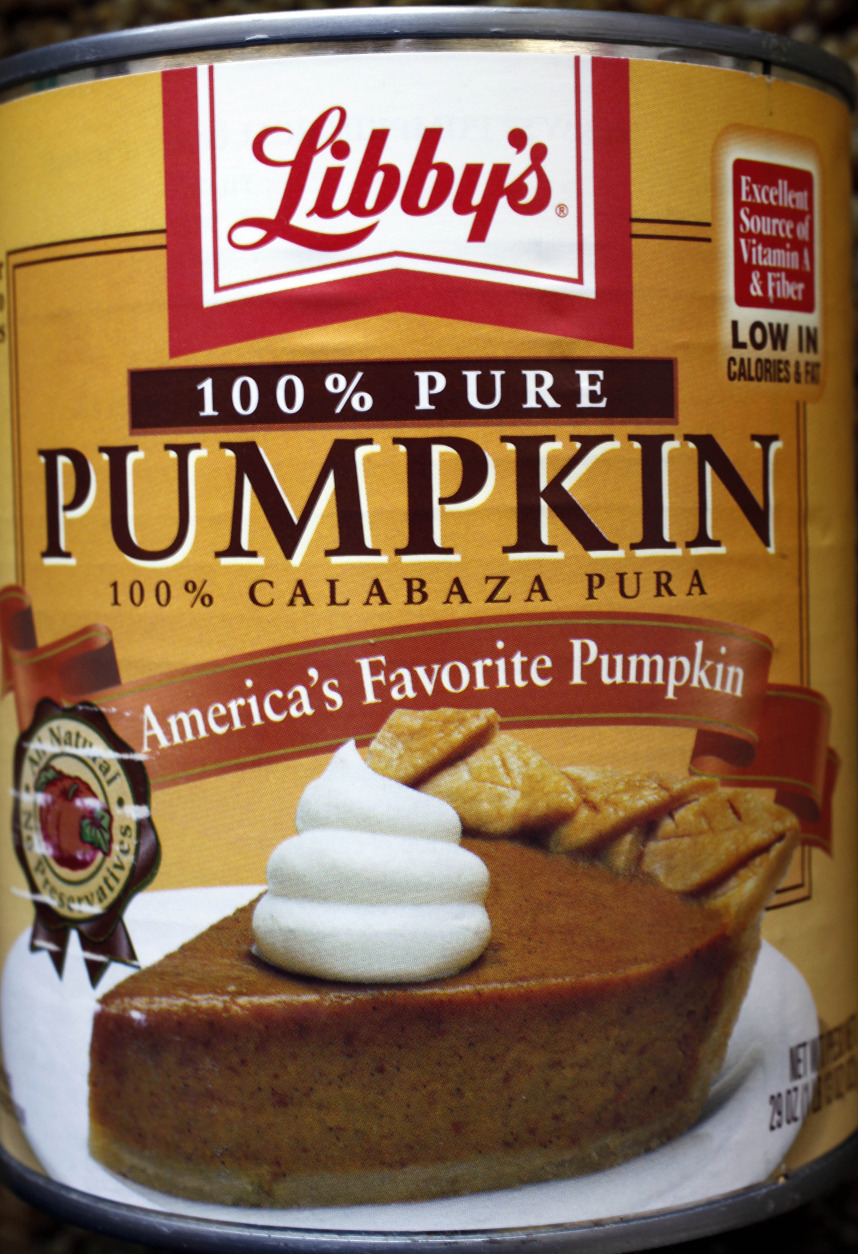
According to the University of Illinois and Iowa State's Agricultural Marketing Resource Center, 90 percent of pumpkins grown in the U.S. are grown within a 90-mile radius of Peoria, Illinois. The nearby town of Morton is known as the Pumpkin Capital of the World, since it is home to the Libby's pumpkin processing plant, which cans 85 percent of the world's pumpkins each year. (AP Photo/Paul Sakuma)
AP Photo/Paul Sakuma
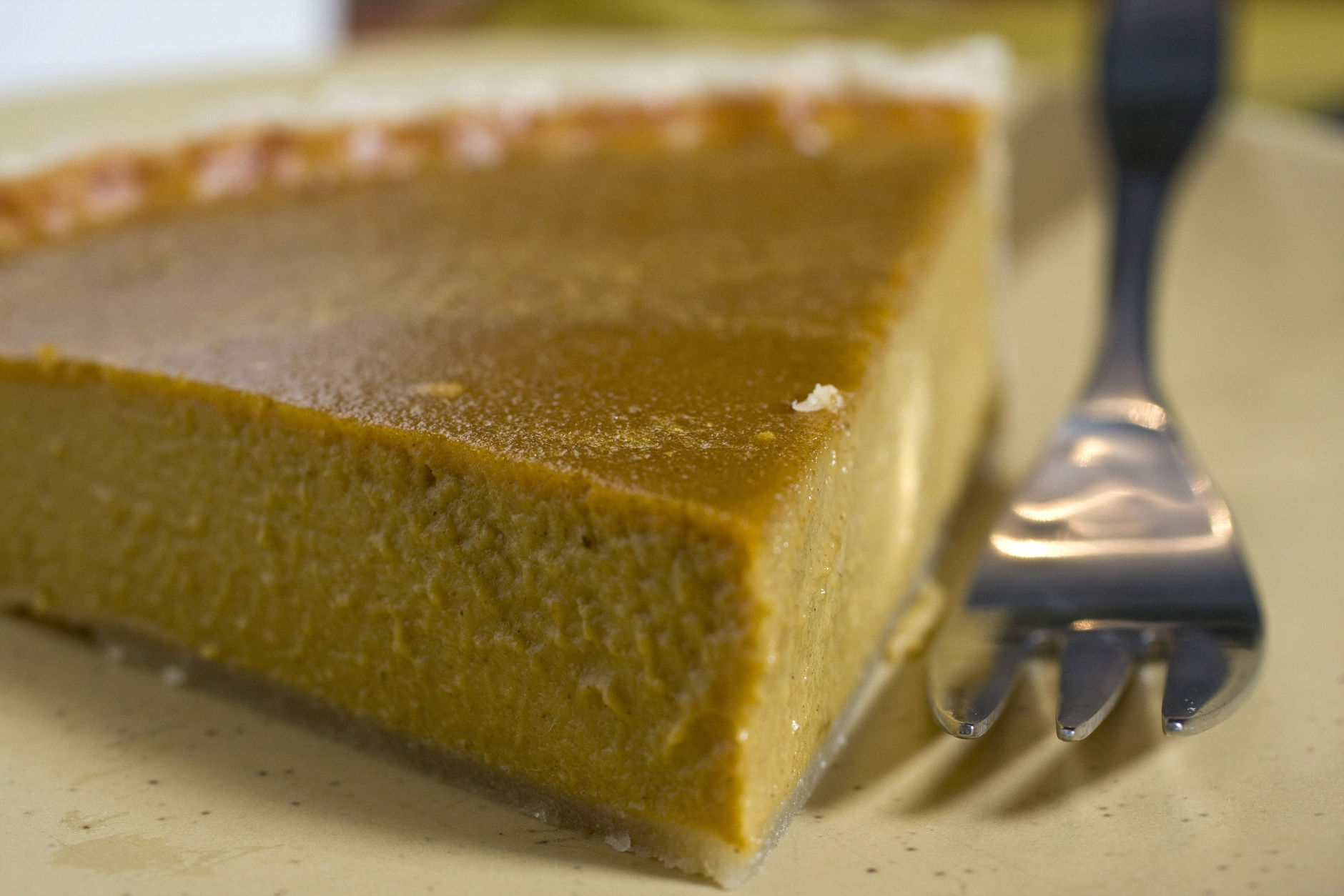
According to the American Pie Council, apple pie is America's favorite, but pumpkin comes in second.
More than 50 million pumpkin pies are baked and consumed each year, the vast majority during the holiday season, "The Oxford Companion to American Food and Drink" says. During the week of Thanksgiving, Costo sells around 1 million pumpkin pies, according to The Seattle Times -- that equals roughly 4.7 million pounds of pumpkin and roughly 12.6 million fresh eggs.
According to the Guinness Book of World Records, the largest pumpkin pie ever baked weighs 3,699 pounds. It was made by New Bremen Giant Pumpkin Growers at the New Bremen Pumpkinfest in New Bremen, Ohio, in 2010. The diameter of the pie was 20 feet; the crust was made of 440 sheets of dough. (AP Photo/Larry Crowe)
AP Photo/Larry Crowe
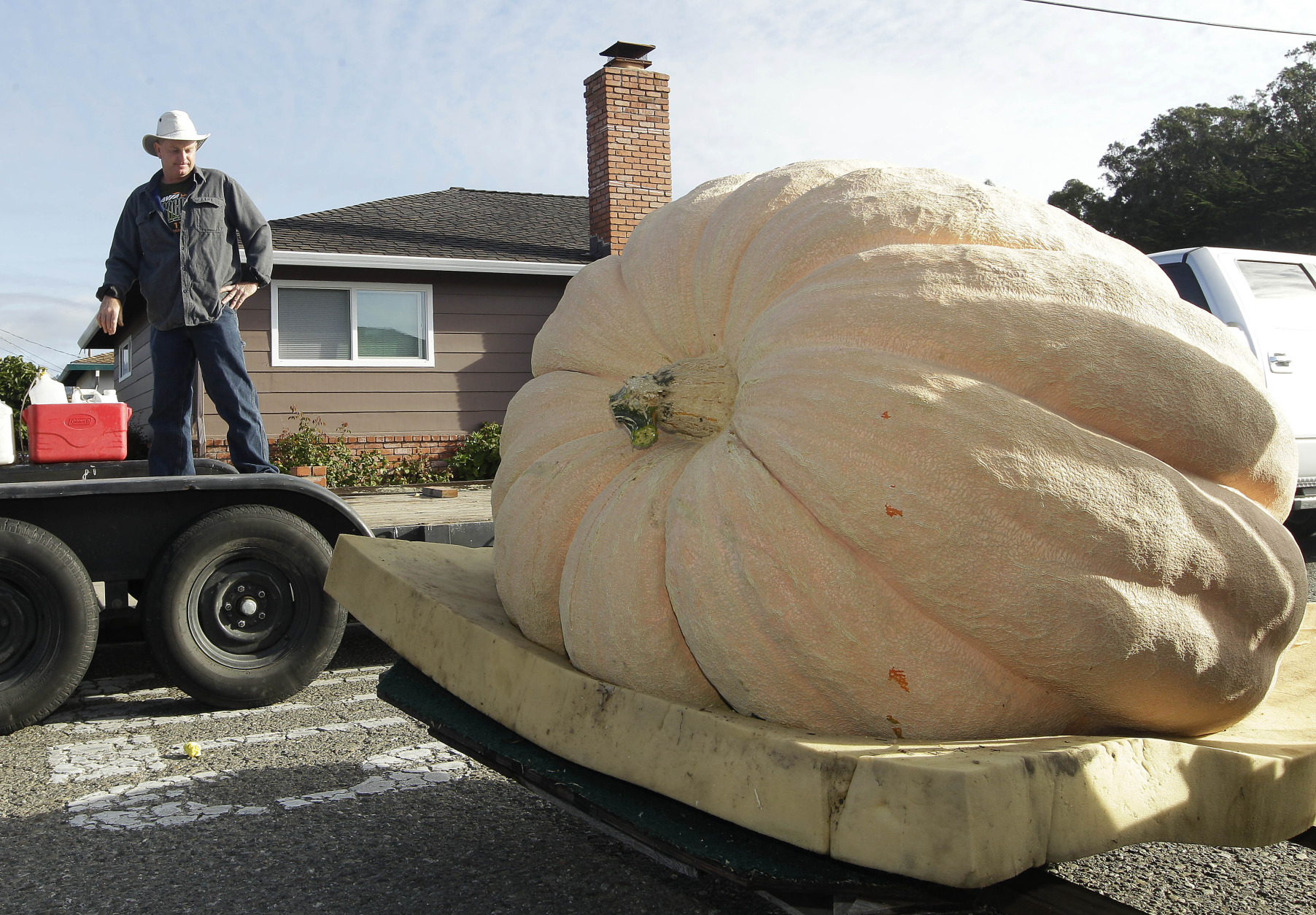
The heaviest pumpkin on the books weighed 2,009 pounds when it was presented at the New England Giant Pumpkin Weigh-off in 2012, the Guinness Book of World Records reports. (AP Photo/Tony Avelar)
AP Photo/Tony Avelar
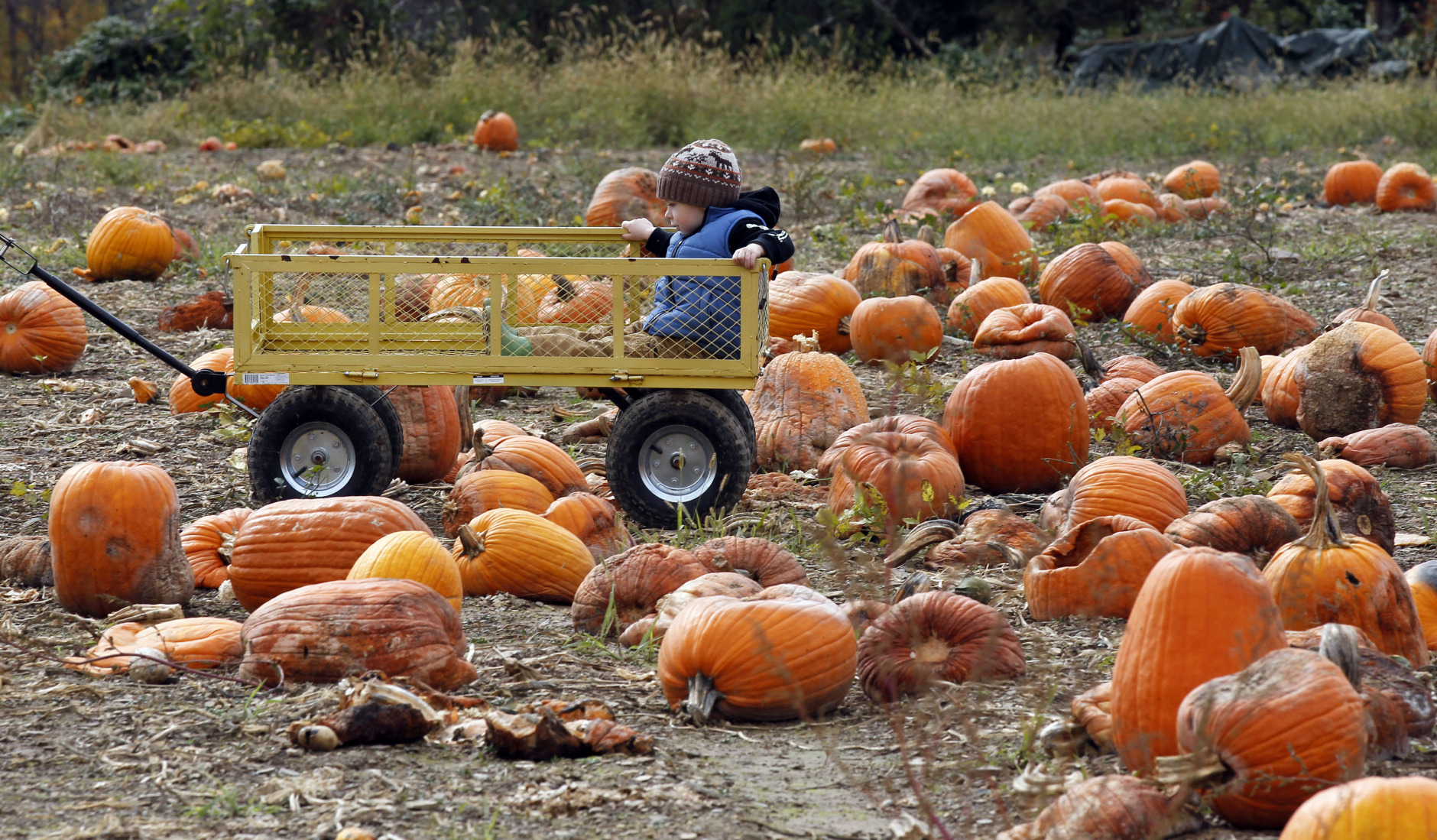
There are more than 20 pumpkin patches in the D.C. area, many of which host fall festivals throughout the season. About.com has an interactive map of local patches, as well as information on dates and hours of operation. (AP Photo/Alex Brandon)
AP Photo/Alex Brandon
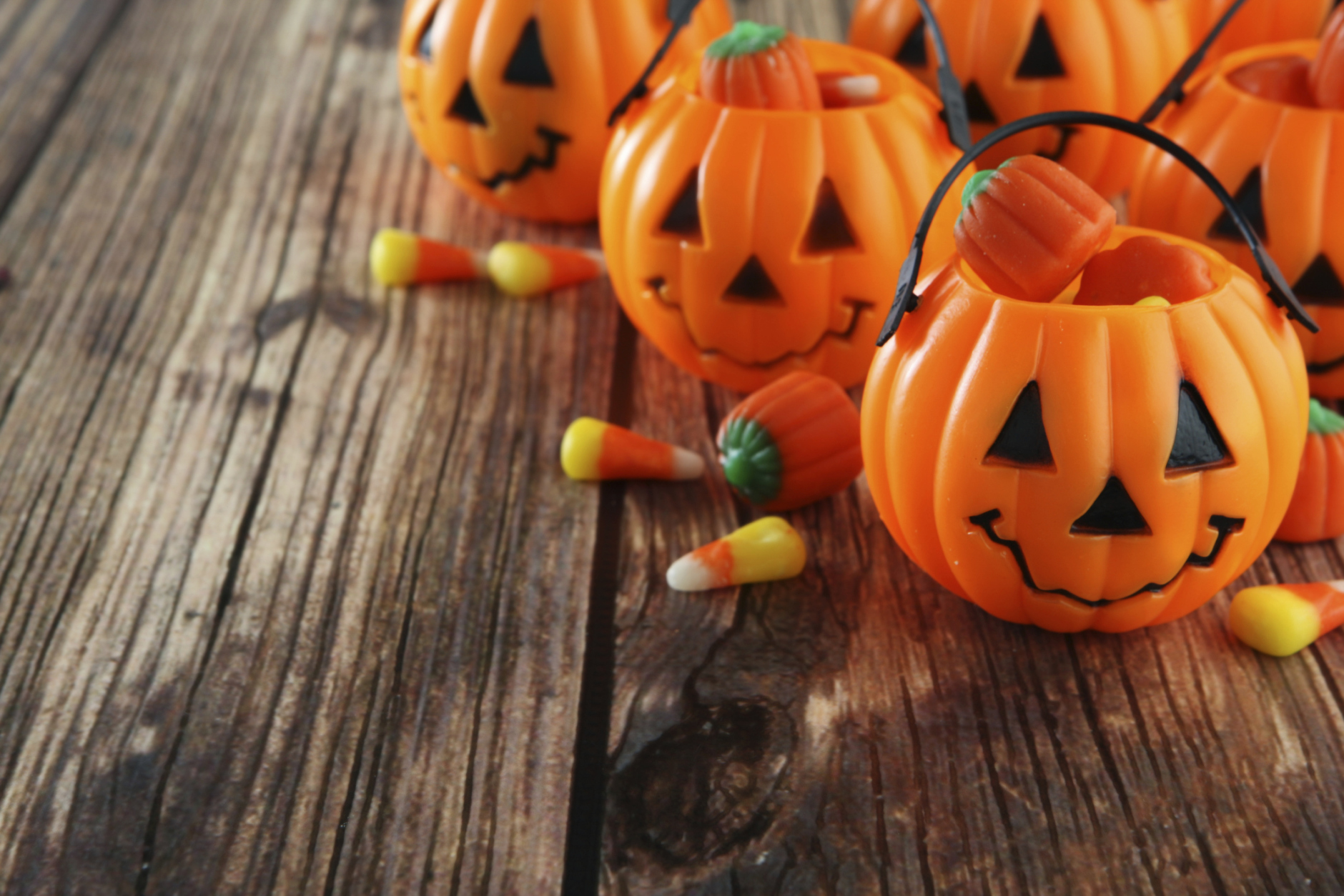
Thinkstock
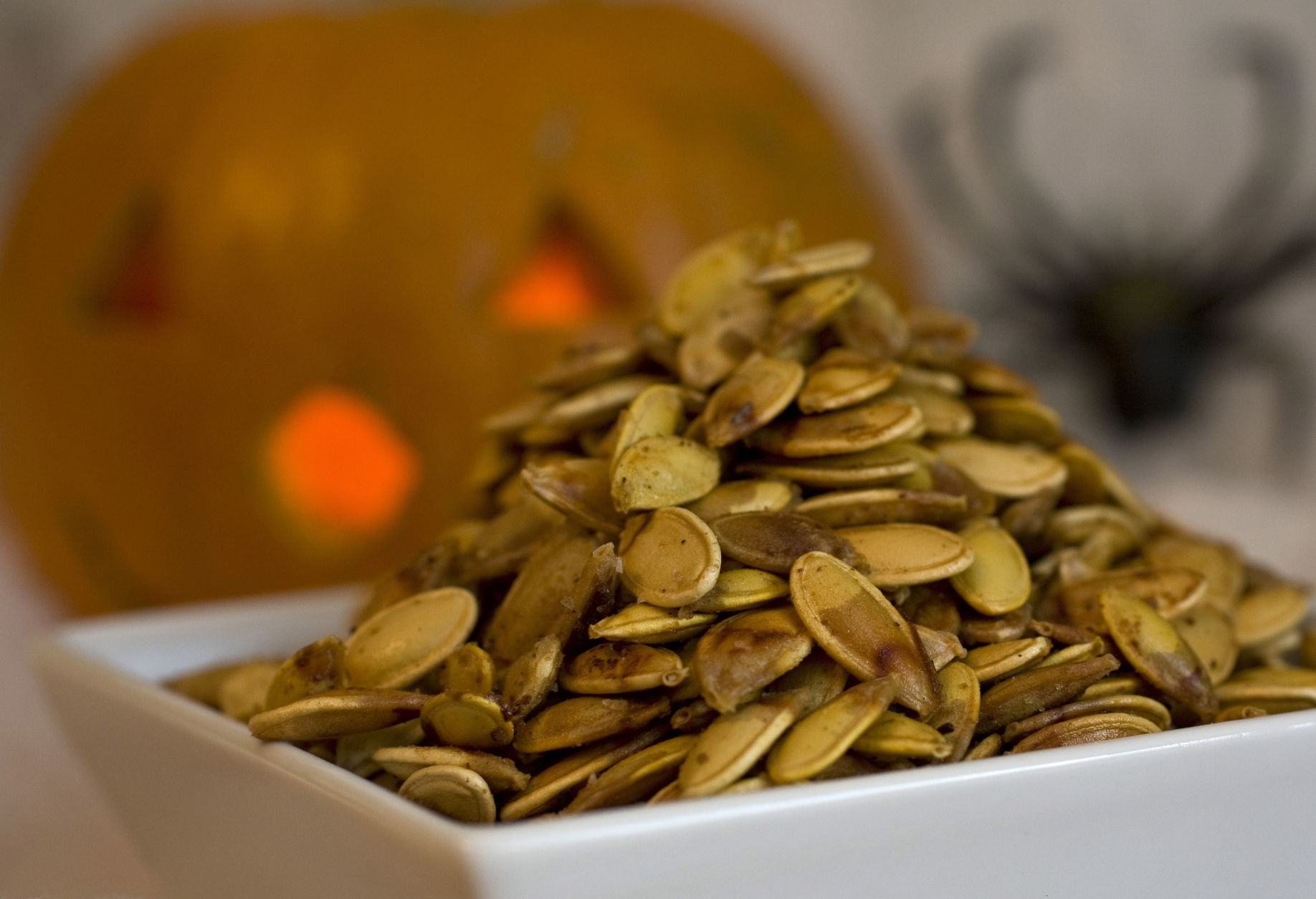
AP Photo/Larry Crowe
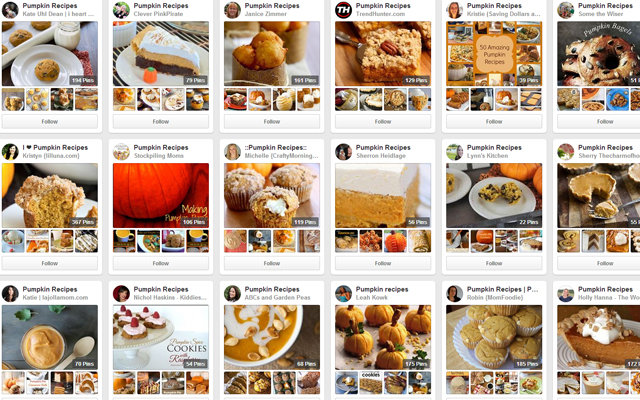
People like to eat pumpkin-flavored food in the fall, and Pinterest is proof.
The social media site has pages full of boards, dedicated to pumpkin recipes -- such as these pumpkin s'more cupcakes and this pumpkin bourbon pudding. (WTOP Screen Shot)
WTOP Screen Shot
